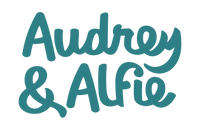
This is a collaborative blog, prepared by Nicole Gleeson (Paediatric Nurse, First Aid Trainer and Founder, Rhythm First Aid) and Zoe Taylor (Dietitian and Co-Founder, Audrey & Alfie).
Introducing solids marks a significant milestone in your baby’s development, but it’s natural to feel a bit uncertain or anxious, especially about safety and choking incidents.
To make starting solids as safe as possible for your baby, it is important to consider the timing of when to start introducing solids, the environment that you create at mealtimes, how you prepare and serve foods, and what to do in an emergency.
We will cover each of these topics throughout this blog and provide links to other credible sources of information where appropriate.
For a summary of this blog, read our Top Tips for Starting Solids Safely.
When to start introducing solids?
The optimal time to begin introducing solids to your baby is when your baby demonstrates signs of readiness. This typically occurs around 6 months of age, and not before 4 months of age for traditional weaning, and not before 6 months of age for baby led weaning.
Common signs of readiness include:
- Good head control and able to sit up with support
- Watching and leaning forwards when food is around
- Reaching out to grab food or spoons to put in their mouth (often food that you are eating!)
- opens their mouth when you offer them food on a spoon.
If you are unsure whether your baby is ready to start solids or not, talk to your GP or Maternal Child Health Nurse before starting for individual advice.
Create a Safe Eating Environment
How, where and when you offer your baby solid foods to eat is also important from a safety perspective.
Always make sure:
- Your baby is seated upright in a secure highchair at all times
- You never force-feed or insert anything into your baby's mouth.
- You make mealtimes as calm and quiet as possible, eating together when you can. If your baby becomes upset or distressed, cease the mealtime and try again when they are calm.
- To offer solids when both you and your baby are relaxed and un-hurried. Exploring different foods, tastes and textures is a big experience for babies, and can take some time.
- You supervise your baby at all times whilst eating solid food.
Food Preparation
Preparing and serving foods that are age appropriate is very important when starting solids.
The most important thing to remember when preparing food is to ensure the foods you are providing are of an appropriate texture, free from any lumps, chunks or hard ‘bits’ that could cause your baby to choke.
Offering pureed or soft mashed foods is a common way to start for families undertaking traditional weaning. For baby-led weaning (which should not start before 6 months of age), this means offering soft and easily squishable foods like long ‘sticks’ of very ripe banana or avocado.
It is also very important to avoid foods that are known to have a higher risk of choking, including any food with firm/hard bits, which are round and/or slippery.
(Source: NSW Government, Northern NSW Local Health District)
Some examples of these include raw apple or carrot, whole grapes, cherry tomatoes or blueberries, whole nuts, chickpeas or other legumes, corn chips, etc.
For more information and examples of first foods and how to safely prepare them, read our blog on Starting Solids or try one of these resources:
- Introducing solids: why, when, what & how | Raising Children Network
- Starting solids: practical tips | Raising Children Network
- Introducing solid foods for babies - Better Health Channel
The difference between gagging and choking
Understanding the difference between choking and gagging can help you to understand what is happening if you experience them, and respond appropriately.
According to the Royal Childrens Hospital Melbourne:
“Choking is when the airway becomes blocked. Some of the signs of choking include: gasping, blue colour around the lips or eyes, wheezing, inability to produce sounds such as crying.”
“Gagging and spitting out foods are expected parts of developing eating skills when introducing new textures or flavours. Gagging is different from choking.”
(The Royal Childrens Hospital Melbourne, May 2020, accessed online at: 200101 FandE Gagging Choking A4 FSheet_FA_WEB.pdf (rch.org.au))
Preparing for an emergency
If your think your child may be choking and they are having trouble breathing, call Emergency Services immediately (in Australia, dial 000) and immediately start choking first aid.
The Flow Chart below, which was kindly shared with us by Rhythm First Aid (developed by the Australian Resuscitation Council), explains what to do if you think your child may be choking.

Note: It is strongly recommended that all caregivers complete a first aid course that includes infant and child CPR and choking incidents, to be as prepared as possible for an emergency situation.
Rhythm First Aid provides first aid courses for parents and carers of young children in Victoria. Click here to view their specially designed infant & child first aid course.
For training specific to choking, including what is gagging/choking, when to intervene and how to effectively perform back blows, Rhythm First Aid's $20 CHOKING MASTERCLASS is for you.
Other important notes
- When your baby is no longer opening their mouth for food, actively pushing the spoon away or becoming upset, they have likely had enough. It’s a good idea to end the mealtime here, and try again another time when everyone is calm and rested (even if they didn’t eat anything at this attempt)
- Remember that babies' hunger levels vary from day to day, just like adults.
- Extra care may be required when introducing solids to babies where there is a family history of food allergy or intolerance, or for families following a vegan or vegetarian diet, as your baby may need extra nutrients. Seek advice from your doctor, maternal and child health nurse or an Accredited Practising Dietitian (APD).
- Take care to always practice good food hygiene practices at home and when out and about, to ensure babies food is safe from harmful bacteria.
This information and advice included in this blog is of a general nature only, and is not designed to replace individualised advice from a healthcare professional. To seek individualised advice, contact your GP, Maternal Child Health Nurse or Accredited Practicing Dietitian.


Comments (0)
Back to Starting Solids